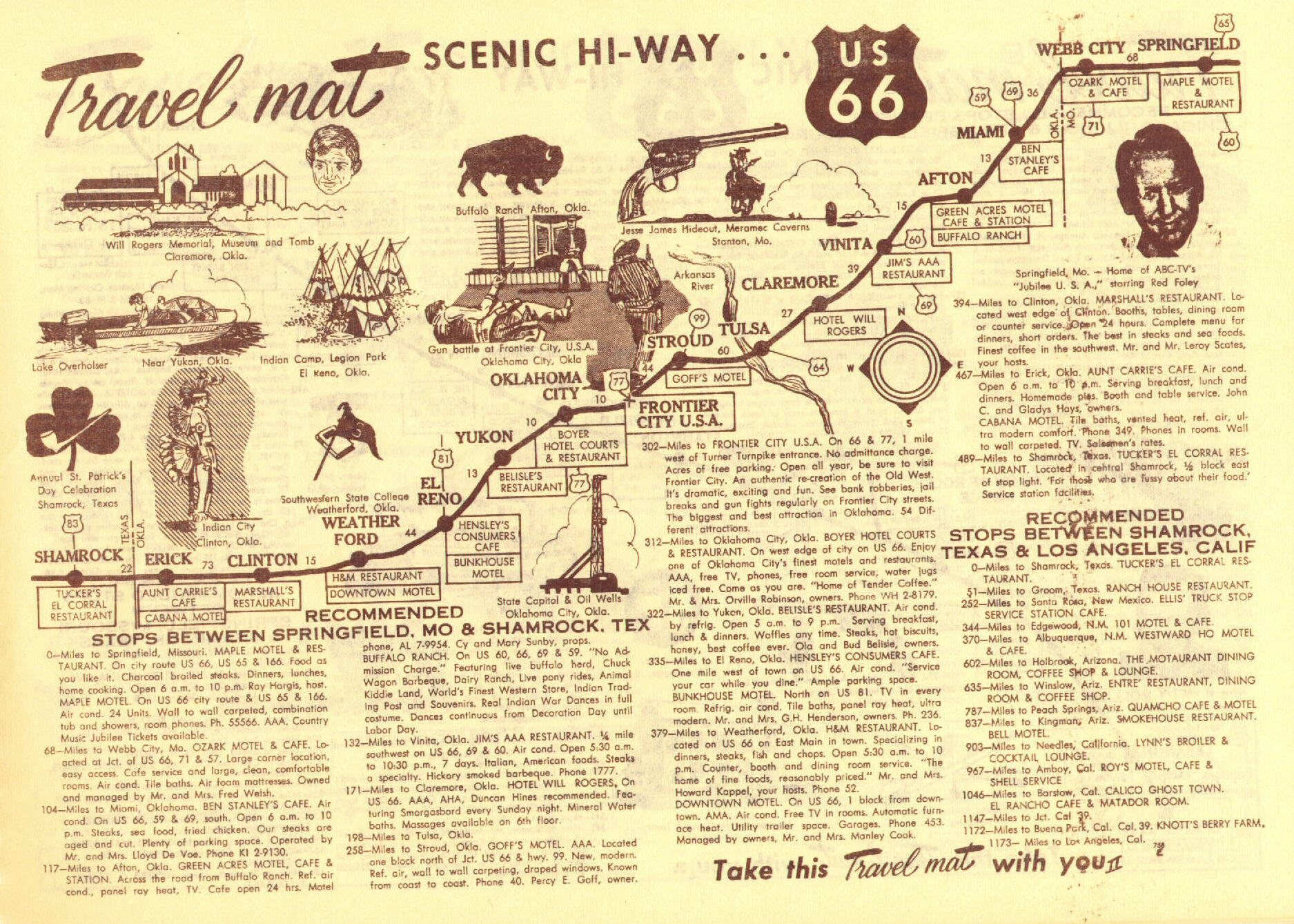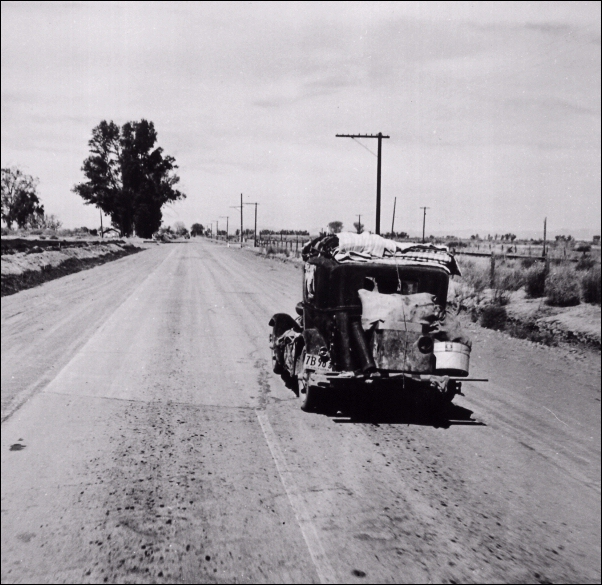Ch.11-15, Assignment B
In The Grapes of Wrath, Steinbeck demonstrates the plight of migrant workers during the Dust Bowl era by tracking the Joad family as they travel westward by Highway 66.
 |
| map and songbook (source) |
"Highway 66 is the main migrant road. 66—the long concrete path across the country, waving gently up and down on the map….66 is the path of people in flight, refugees from dust and shrinking land, from the thunder of tractors and shrinking ownership….66 is the mother road, the road of flight"
(cool fact: Steinbeck and his wife also went west on Highway 66)
Highway 66
Even though Highway 66 is not the longest nor the most oldest road, it is however one of the most remarkable and remembered due to the time period of 1930. The severe drought created by the Dust Bowl ruined farmers' crop during the Great Depression-era. Around 200,000 migrants from Oklahoma, Missouri, and Arkansas followed route 66 to California or Arizona, in search of new jobs and better lives. Due to this, Highways 66 became one of the most historic and most significant, due to the many travelers on it that were imagining for a better life. The highway also has been subject to many movies, novels, and even songs. Nevertheless the highway itself is nothing remarkable. Around 1926, the highway's length was just over 2,400 until around 1985. And on November 11, 1926, due to a vote from Congress, Highway 66 was born.
 |
| Andy Payne, winner of the 1928 Trans-Continental Foot Race,
runs along Route 66 near Flagstaff.
|
(source here)
The highway originally began from Chicago, Illinois, and ran through Missouri, Kansas, Oklahoma, Texas, New Mexico, Arizona, and California, before ending at Los Angeles. (source and for even more info go here)
 |
|
Workers at the site of U.S. Highway Route 66 construction;
James Maddox is second from the left, 1926. (top pic)(source) |
 |
Route 66 travelers during the Dust Bowl (source)
|
 |
(source)
|

No comments:
Post a Comment